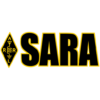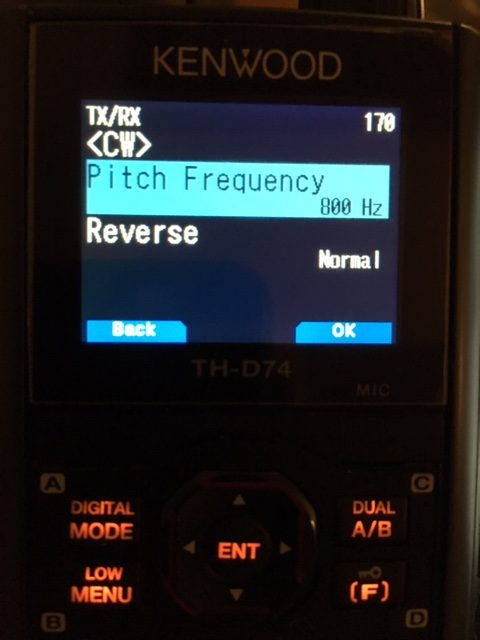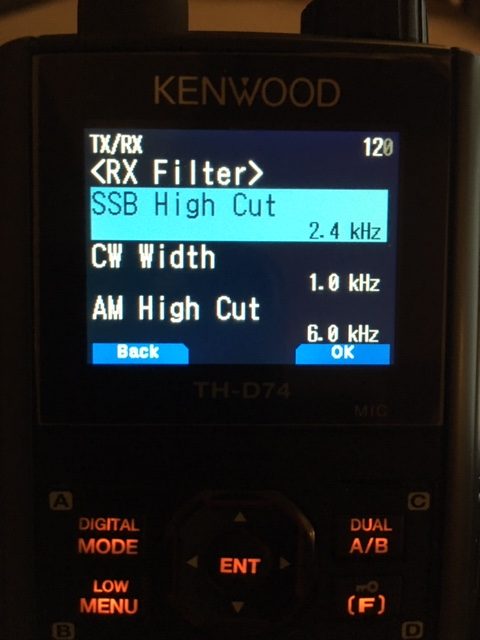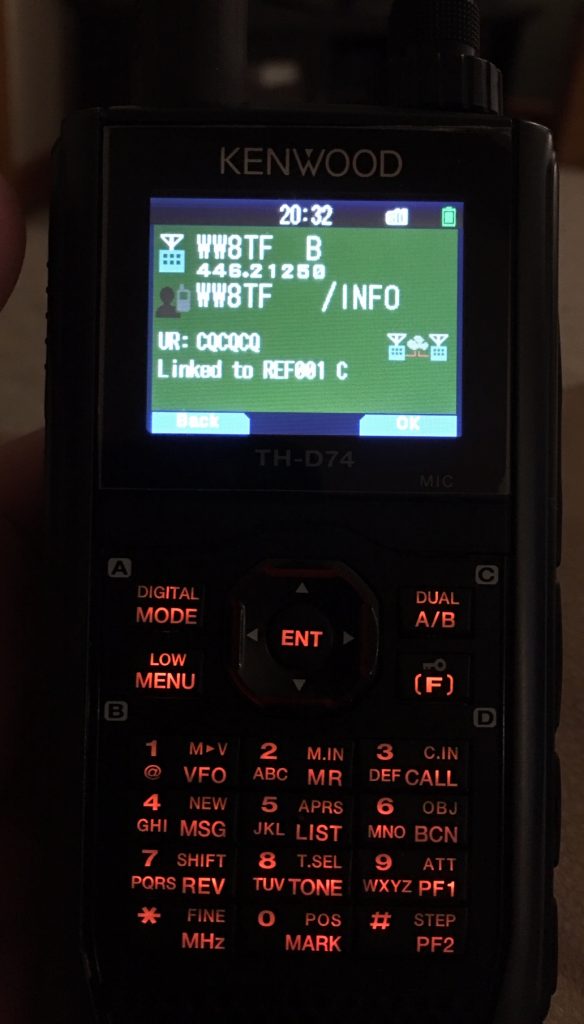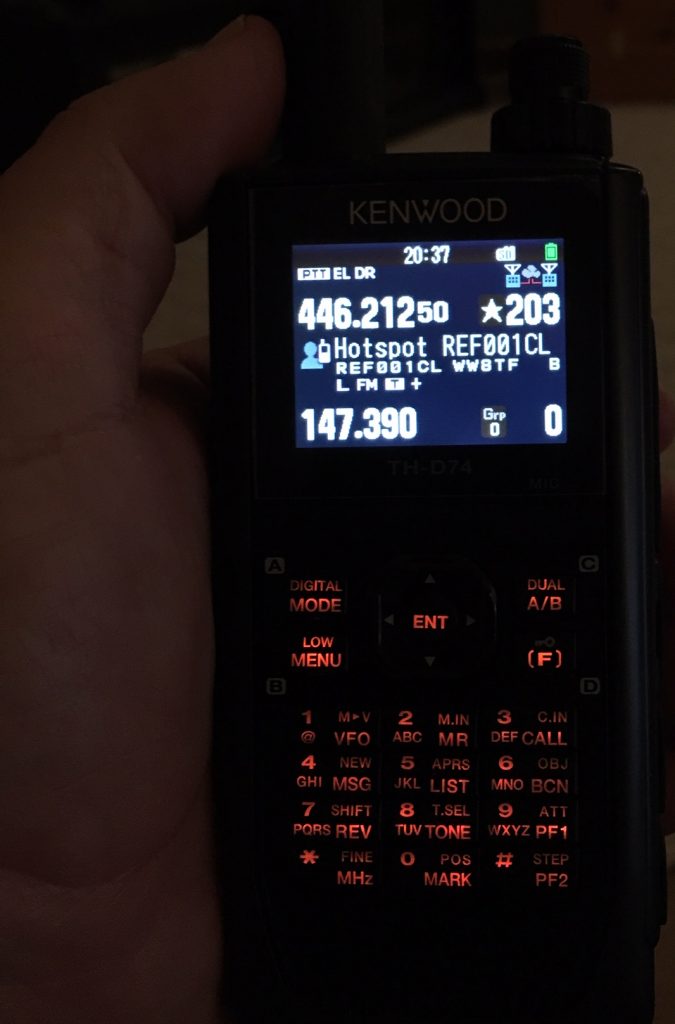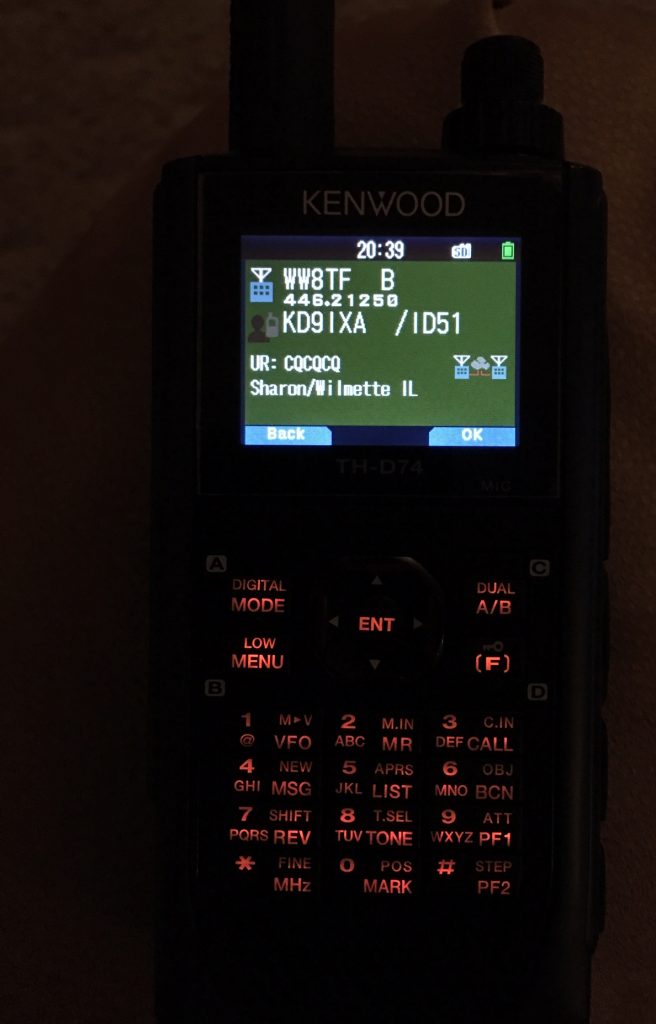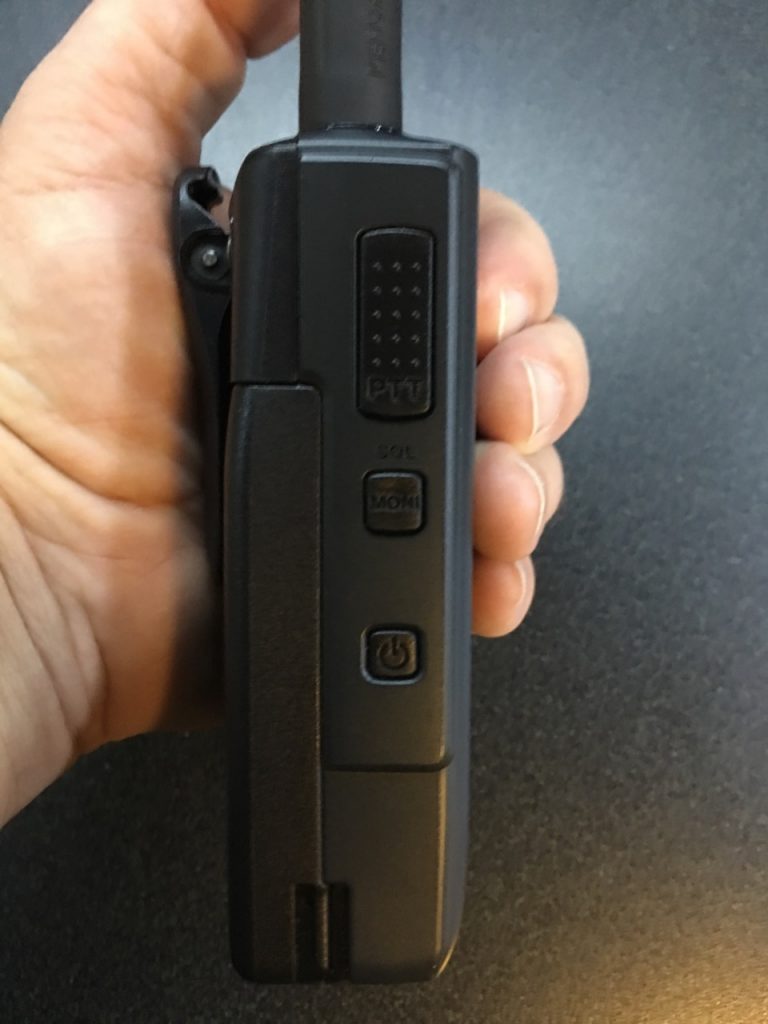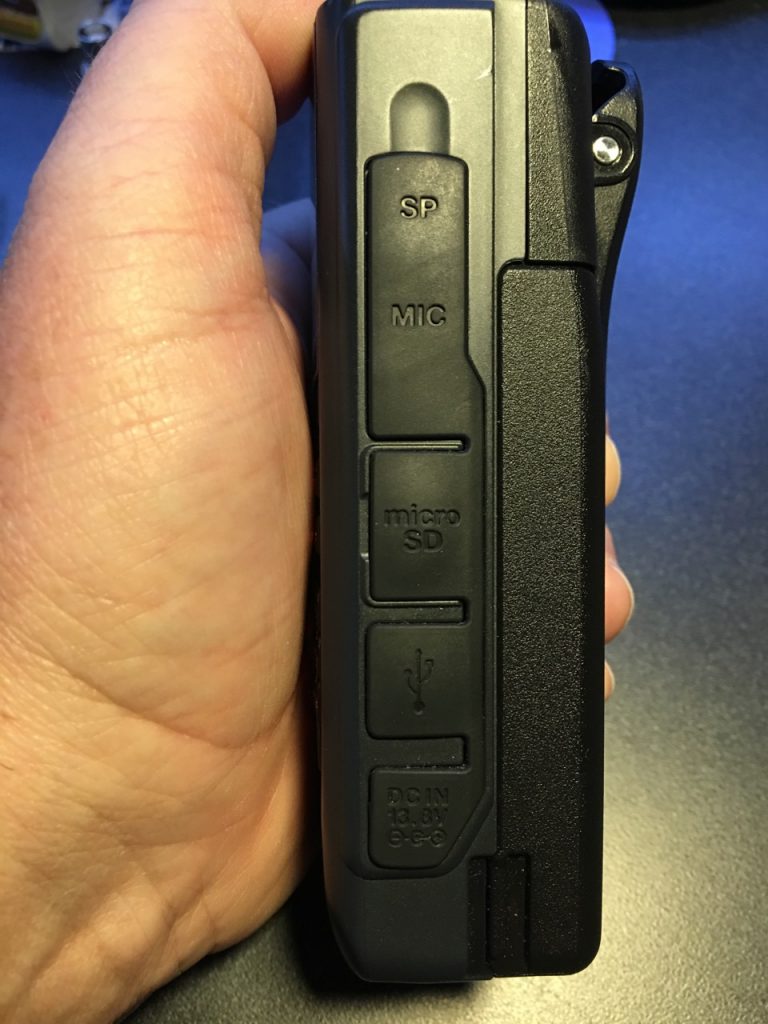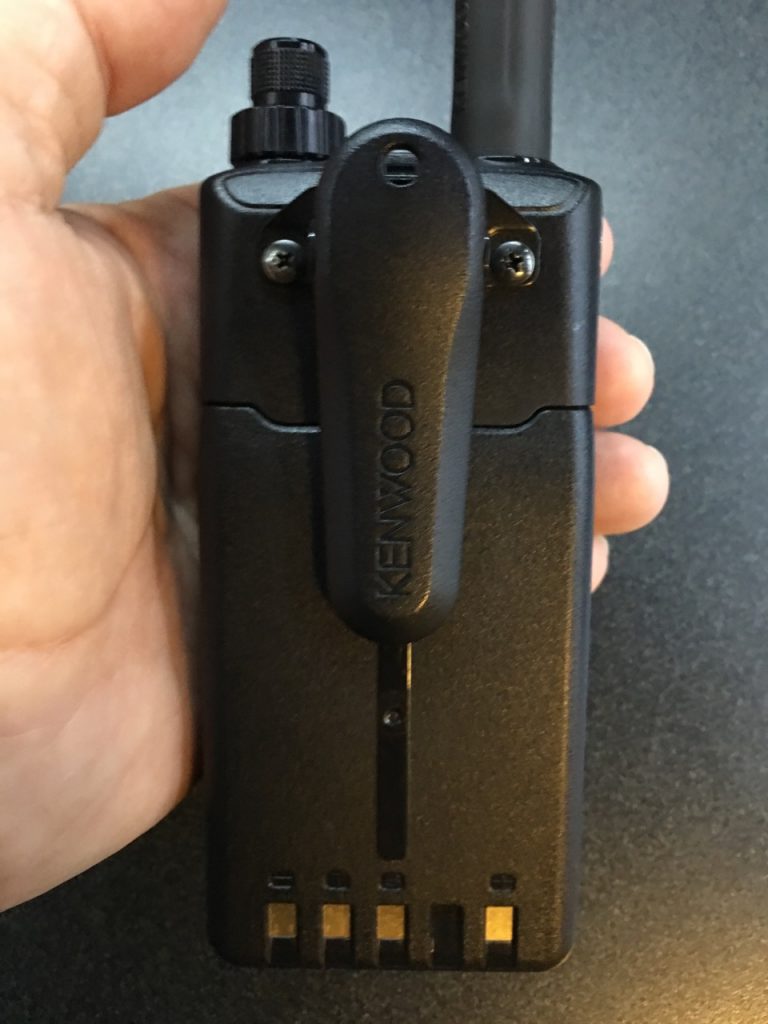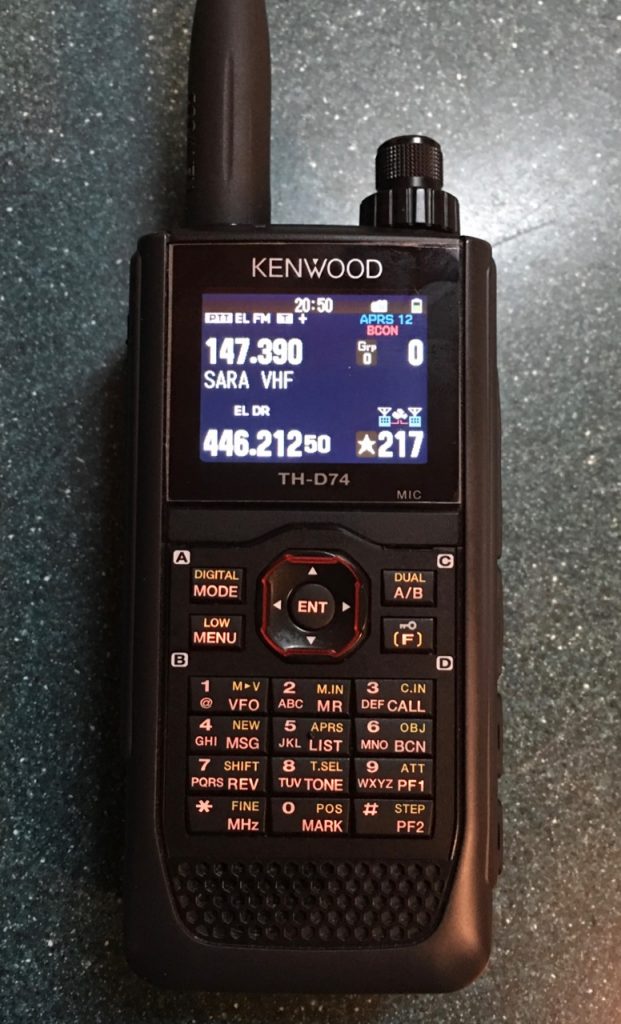A new addition to the N8CD HT family prompted me to write another review. I wasn’t planning on doing another review in the series after #8, but the radio manufacturers keep producing products that I can’t resist.
The Kenwood TH-D74A has about every tech feature you could want in a radio (with the possible exception of not having DMR) all packed into a reasonably sized package. It’s also the first non-Icom branded HT I’ve seen to include DSTAR as well. Physically, the radio is very squared-off but still feels comfortable in the hand. The buttons feel a little light to the touch and more like what you’d have on a computerized gadget than what I’m used to on a ham radio handheld. It also feels a little lighter than you’d expect for it’s size. Overall this radio feels like it spent a lot more time being designed by engineers than by ergonomic and marketing people. But – if I’m laying down this kind of money for a high-tech gadget, I want the engineers to be in charge. The display is a real, color TFT and looks fantastic, and the keyboard is backlit.
Speaking of displays, one advantage of the free-form formatting of a TFT display is that engineers were not stuck to fixed fonts in hardware. What this means is you can display both the frequency AND the alpha-tag for a memory at the same time rather than one or the other like you do on many radios. There is a LOT of information available on the display at the same time with this radio.
Just a few of the features I’ve explored are:
- Transmit and receive on 2m, 220MHz, and 440MHz at 5 watts
- Receive from 100KHz to 70MHz, 136-174, 216-260, 410-470 MHz
- Receive includes not only FM, but also AM, LSB, USB, and CW on all of those frequencies as well!
- True dual receive – can receive both the A and B bands at the same time (not in a scan mode like many radios)
- Built-in APRS transmit and receive
- Built-in GPS receiver that is sensitive enough to work inside many houses even
- DSTAR digital mode (one of the few non-Icom radios on the market with DSTAR)
- An SD Card slot to hold position logs, repeater lists, audio recordings from off-the-air, backups of memories and other configs
- A real, actual, micro-USB port that can be used to program the radio, and also to tether the radio as a KISS mode packet TNC.
- Bluetooth, which can be used in packet radio mode, and also to send received audio into your car speakers or headset, and for microphone/headset use.
- A very nice display with reasonable prompts in the menus to get you to what you want
The radio is not capable of full-duplex transmissions, meaning that you cannot transmit on the top band while receiving at the same time on the bottom band. This is not the same as the duplex setting used for repeater work – that is available as you’d expect. The main use case for full-duplex is FM satellite work, so if this isn’t a priority for you, you may not care. The radio IS capable of receiving two frequencies at the same time on the top and bottom bands, so you can listen to 2m, 220, and 440 without scanning or the annoying switching operation common in some dual band HT’s and nearly all Chinese branded radios. The only limitation to the dual band receive is frequencies below 138MHz (HF and 6m) can only be heard on the bottom band. The CTCSS/PL/tone squelch decoder works on both the A and B bands at the same time as well, unlike some other brands like Alinco and most Chinese radios.
As of the time this review is being written, I’ve had the radio for about 3 months. In that time I haven’t tried all the features, but I’ve dug into several of them. Every radio I’ve ever owned has some things I like and at least a few features that I don’t. This radio is no exception. Because of the huge number of features packed into this radio, I would not recommend it for someone that isn’t good with maneuvering menus and buttons that each have 3 or 4 functions. However, if you can handle a system like that and want a radio that will keep you exploring features for months, this is the one you want.
| Pros | Cons |
| A reasonably secure belt-clip that attaches to the radio – not the battery, and sturdy mounting system for the battery | Battery life isn’t the greatest. You’ll want to pick up a spare battery to keep handy if you plan to use this radio away from home. |
| The display is a full color TFT unit, and it is gorgeous | The display is hard to read unless the backlight is on. It’s beautiful when the light is on, but that adds drain to the battery |
| A full, pure, FCC-compliant 5 watts on 2, 220, and 440 bands, and also a 50 milliwatt mode for use with very close repeaters and Allstar or DSTAR hotspots | It is expensive. HRO has it for $469.96 and DX Engineering has it for $498.95 as of 11/21/18. Add in a second battery and you’re near $550 for the radio. |
| Can be programmed with a standard Micro USB cable and software that is a free download from Kenwood’s website | The free Kenwood software isn’t the greatest. RT Systems has a package for $25 that can use a standard Micro USB cable instead of the usual proprietary RT Systems cable. |
| 220MHz, APRS, DSTAR, and HF SSB/CW receive in addition to all the “normal” HT features | No full-duplex transmit-while-receiving, as is used on FM satellite work |
| Fantastic transmit and receive audio in analog modes, with plenty of transmit audio. It does NOT sound like an HT when a ham is transmitting through it. | DSTAR audio isn’t quite as pleasant on transmit or receive as an Icom ID51AD that I’ve compared it to |
Here’s a video showing the radio receive HF SSB and CW, used as an APRS node, and also in DSTAR mode through a hotspot.
HF Receiving
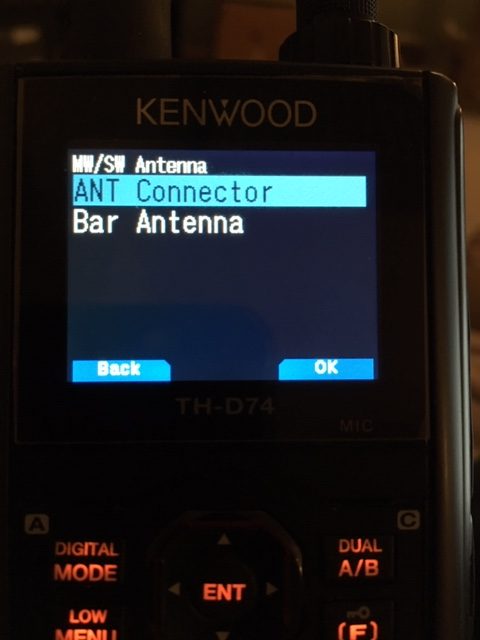
There are quite a few HTs on the market that offer reception in the HF band, including the Yaesu VX-8DR reviewed earlier in this series. However all of these radios only receive AM mode on HF, limiting you to CB (I use it on roadtrips for this and find it quite handy) and shortwave broadcast stations which certainly aren’t what they were 20 years ago. The TH-D74A has a built-in BFO that allows it to receive SSB and CW as well as AM! One limitation to keep in mind with HF receiving is the antenna. The 6″ rubber duck that comes with the radio is NOT tuned for HF, and is probably more of a dead short at HF frequencies. Through a menu option you can select either the the antenna connector or a built-in bar antenna that is slightly better than the rubber duck for HF in some cases, but not by much. On most evenings I’m able to receive W1AW code practice on 80m and 40m on both the stock rubber duck and the internal bar antenna, but it’s light.
If you’re planning on using the HF receive function of this radio often, I’d recommend either buying or making a wide-band rubber duck or plan on connecting at least a modest external HF antenna to the HT. With the radio connected to a 80m OCF dipole, it hears very well. The front end is easily overloaded with a “real” antenna so you’ll find yourself dialing in the built-in attenuation, But, as you can see in the video it is usable. I could see this radio being used as the receiver to go with a home-brew QRP transmitter for example. As evidence that HF wasn’t just an afterthought like it is on so many HT’s, the radio even has some basic filter settings available in the menus similar to what you might see on a “real” HF rig. Tuning steps are configurable for both course and fine, defaulting to 5KHz and 20Hz respectively I wouldn’t want to use the TH-D74A as the receiver during a multi-op contest, but it’s not bad and is a handy feature to have. One note – HF receive is only available on the bottom half of the radio. You can have a VHF/UHF frequency on the top band at the same time, but you cannot have two HF frequencies on at the same time. The radio also has a built-in FM broadcast receiver, so you can listen to the game while monitoring the local repeaters.
APRS & GPS
APRS (Automatic Packet Reporting System) is well implemented in the TH-D74 as well. At the 2018 Hamvention in Xenia this year, I saw a talk by Bob Bruninga, WB4APR who most consider to be the “Father” of APRS (and who is also the holder of the trademark for “APRS”). What radio did Bob have on his belt? The Kenwood TH-D74. I have several APRS capable radios and operate two fairly wide-area APRS digipeaters in the area in Rittman and Akron, so I have some experience with the mode. I can say that in daily use this radio is overall about equal with the Yaesu FT-2DR as the best portable implementation of APRS that I’ve seen. It has all the expected APRS features such as SmartBeaconing, receive packet filter types (distance, station type, etc), distance and bearing to other stations, various display and notification options etc. The APRS mode can also be operated on either the top of bottom bands of the radio at the same time the other bands are used for QSOs in one of the other bands/modes. For ARES events this is a plus – you can be on the net while reporting your position from the same radio. APRS Beaconing can be automatic or manually initiated using the BCN button on the keypad. At first I was excited that this was the first HT I’ve owned with a BACON button on it, but I have not been able to summon bacon with it so far.
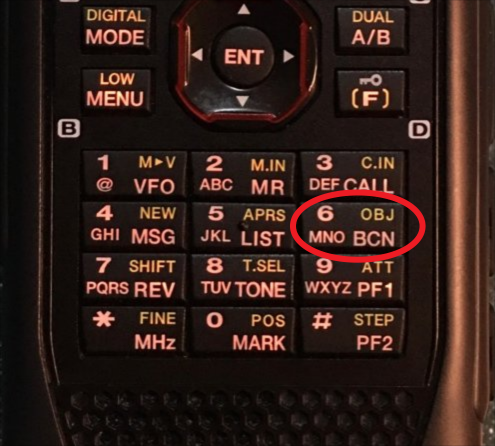
The GPS receiver that’s built into the TH-D74 is top notch. It is exceptionally sensitive to the point that I can use it inside on the first floor of my two story, wood-framed house. It also has reasonably quick acquisition times considering it can’t “cheat” like a smart phone and use the cellular network to get it’s initial rough position. The GPS supports position reporting for APRS and DSTAR through DPRS, and also has the ability to be used as a traditional hand-held GPS device with waypoints and breadcrumbs. The HT does not have a map, so of course it wouldn’t be a good choice to do turn-by-turn directions. Positions can be logged to a microSD card in the slot on the radio as well. The built-in GPS receiver can also be used to automatically set the internal clock on the radio as well.
DSTAR
With all the recent popularity (and dare I say hype) of DMR, DSTAR has taken a back seat in amateur radio digital modes. Maybe some day I’ll do an article comparing the various ham digital modes, but that’s a big topic by itself. I consider DSTAR by far to be the most ham-friendly digital mode in the field of DSTAR, Fusion, DMR, P25, and NXDN. It supports callsign routing, the networking is decentralized so that a Brandmeister glitch doesn’t take down the whole network, and it understands the notion of callsigns rather than radio ID’s. Contrary to myth, DSTAR is also no more proprietary than DMR or other digital modes, and is not at the edge of patent enforcement litigation like some of the other digital modes. Because DSTAR is a digital mode that started in ham radio rather than starting in the commercial space it doesn’t have the manufacturing volume and attention from manufacturers that DMR does, and up until now Icom was the only mainstream radio manufacturer with DSTAR radios in their portfolio. These factors and others has kept the price high for DSTAR capable radios, which has kept the popularity lower.
This radio does all the normal DSTAR modes you’ll find in an Icom radio, and usually they’re called the same things as well. If you’ve used DSTAR on an Icom you’ll feel comfortable on this radio. The color TFT display is utilized well to show DSTAR information on this radio as well.
One surprising thing I found when I compared this radio to an Icom ID-51AD that I also own is that to my ear the Icom has slightly smoother and easier-to-listen-to audio than the Kenwood. I’ve heard both Kenwood TH-D74’s and Icom ID51ADs on various DSTAR reflectors, and I also feel the transmit audio of Kenwood DSTAR audio is not quite as pleasant as the Icom’s. Don’t misunderstand – the Kenwood audio isn’t bad on DSTAR, it’s just not as nice as the Icom’s. In analog FM mode, the Kenwood TH-D74 has some of the best transmit and receive audio I’ve heard in a ham oriented HT.
In Northeast Ohio, DSTAR repeaters have largely been replaced by DMR repeaters. However with the advent of Hotspots and home-brew repeater hardware for DSTAR, you can still get in on the networked fun using a hotspot you may already have.
Wrap-up
The Kenwood TH-D74 is a technology powerhouse. It has plenty of features to easily make it your only HT, and a lot of options that I haven’t even explored yet after 3 months. It is expensive, and it isn’t the smallest radio on the market, but it’s the quality you’d generally expect from Kenwood. There are so many features that I often find myself Googling to learn how to do something. The manual is very good for basic features, but you need to go online to find details on the deeper functions. I consider that to be part of the fun. One feature I appreciate on the radio is that in spite of all the computerized functions, the volume control is still an actual potentiometer. The reason I like this is that volume controls that use encoders often have rather sharp steps between volume settings. I like to listen to the radio at very low volume at my desk in the office, and sometimes when with the family in the living room. This old-school volume control lets me precisely set the RX volume just where I want it.
For reference, check out this Operating Tips PDF on Kenwood’s site to get an idea of some of the modes available on the TH-D74A.
